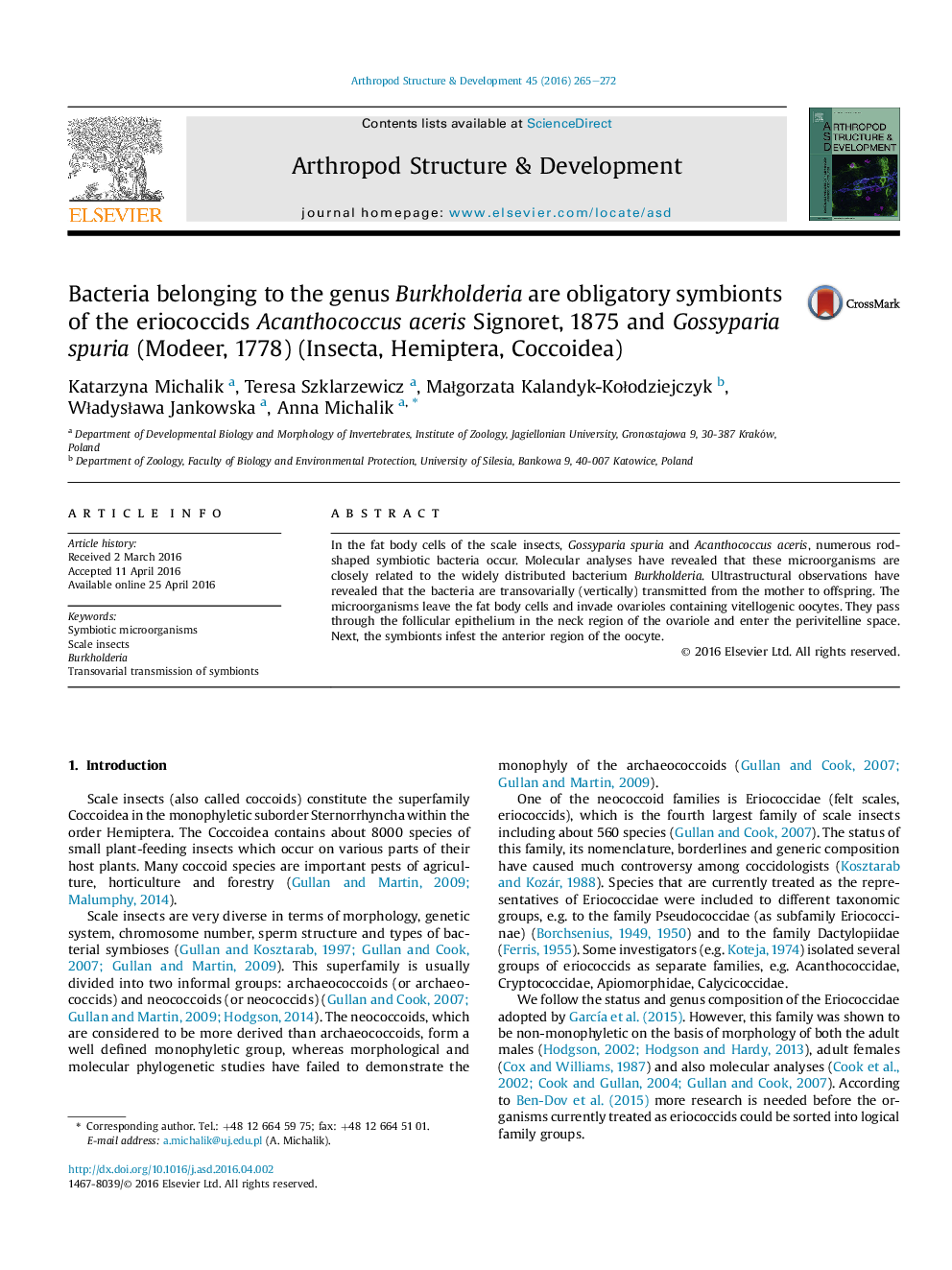| Article ID | Journal | Published Year | Pages | File Type |
|---|---|---|---|---|
| 2778503 | Arthropod Structure & Development | 2016 | 8 Pages |
•In the fat body cells of Acanthococcus aceris and Gossyparia spuria numerous rod-shaped symbiotic bacteria are present.•The symbionts are closely related to the bacterium Burkholderia (Betaprotaobacteria).•The symbiotic microorganisms are transovarially transmitted from the mother to offspring.
In the fat body cells of the scale insects, Gossyparia spuria and Acanthococcus aceris, numerous rod-shaped symbiotic bacteria occur. Molecular analyses have revealed that these microorganisms are closely related to the widely distributed bacterium Burkholderia. Ultrastructural observations have revealed that the bacteria are transovarially (vertically) transmitted from the mother to offspring. The microorganisms leave the fat body cells and invade ovarioles containing vitellogenic oocytes. They pass through the follicular epithelium in the neck region of the ovariole and enter the perivitelline space. Next, the symbionts infest the anterior region of the oocyte.
